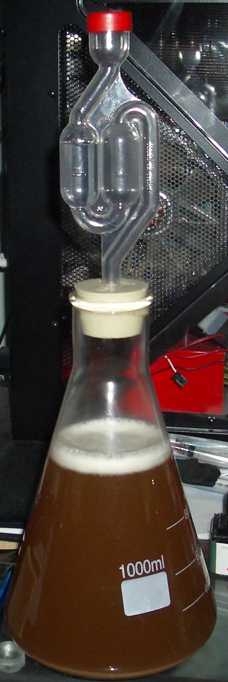First off, I'm not a biologist, and I can't say I'm an expert in genetic mutations. That said, I don't understand why yeast will mutate more in one scenario and not the other. What does washing do that minimizes mutation?
I don't mention washing. I speak only about harvesting slurry. That clarified, harvesting and pitching inoculates the fresh wort with what I consider the proper amount of active cells to encourage a healthy ferment. As I've written elsewhere, the brewery standard for pitching is 1 million active cells per milliliter of wort per degree Plato. This is for
inoculation, not
fermentation. During the aerobic phase of the yeast's life cycle, the inoculated cells metabolize oxygen and other materials in order to make copies of themselves. They stay in the aerobic phase until either the solution reaches saturation or they run out of a necessary component of replication, whereupon they switch metabolic paths to anaerobic. That's when they start eating the malt sugars and putting off carbon dioxide gas and ethanol.
The trouble with overpitching - especially at the rate of knocking out onto a cake - is that the colony never enters the aerobic phase. They immediately and voraciously start devouring wort sugars. When I wrote of mutation before, I should have written about the complete
lack of mutation, because the colony never replicates after the first pitch. They never refresh themselves. They get tired. This puts the cells under stress. It can also create off-flavors, not least of which is a lack of any sort of yeast-ester flavor contribution, which only really happens in the aerobic phase. Moreover, the presence of excessive yeast during the ferment can lead to meaty, rather foul off-flavors.
At any rate, the colony will suffer condemnation from the brewer after far fewer pitches - I used the term 'generations' erroneously - for off-flavors and poor performance, compared to careful harvesting and repitching. Harvesting does set up mutation, because the colony is replenishing itself during every aerobic phase. However, careful harvesting, along with washing and other yeast-management techniques, minimizes the impact of natural selection, by removing trub as well as dead, weak and/or powdery cells.
The evidence is clear - brewers have, do and can harvest and repitch hundreds of generations of the same yeast strain. On the other hand, even the staunchest proponents of knocking out onto cakes will only do it less than five times.
Anyway, I'm planning on pitching a 1.086 Doppelbock onto the cake from a 1.046 Munich Helles, which my understanding is the correct amount of yeast for a lager of that gravity, according to Mr Malty.
So, like most things in brewing, there are always exceptions

~300 milliliters of slurry. That's all you need to properly inoculate 5 gallons of 1.086 lager. Is your Helles yeast cake really that small? That's less than a third of a liter.
I don't think this is an exception; I think there was an error somewhere.
Respectfully,
Bob




